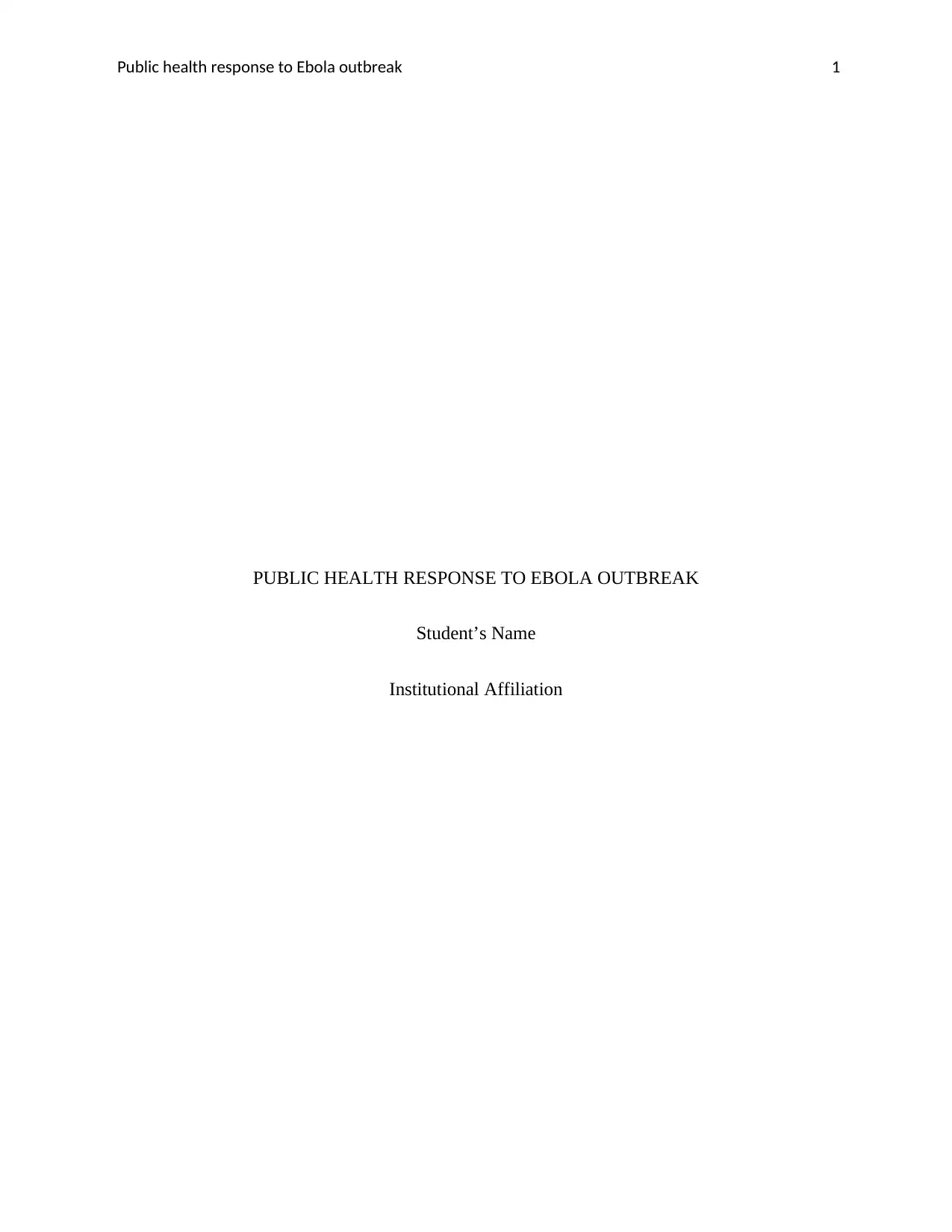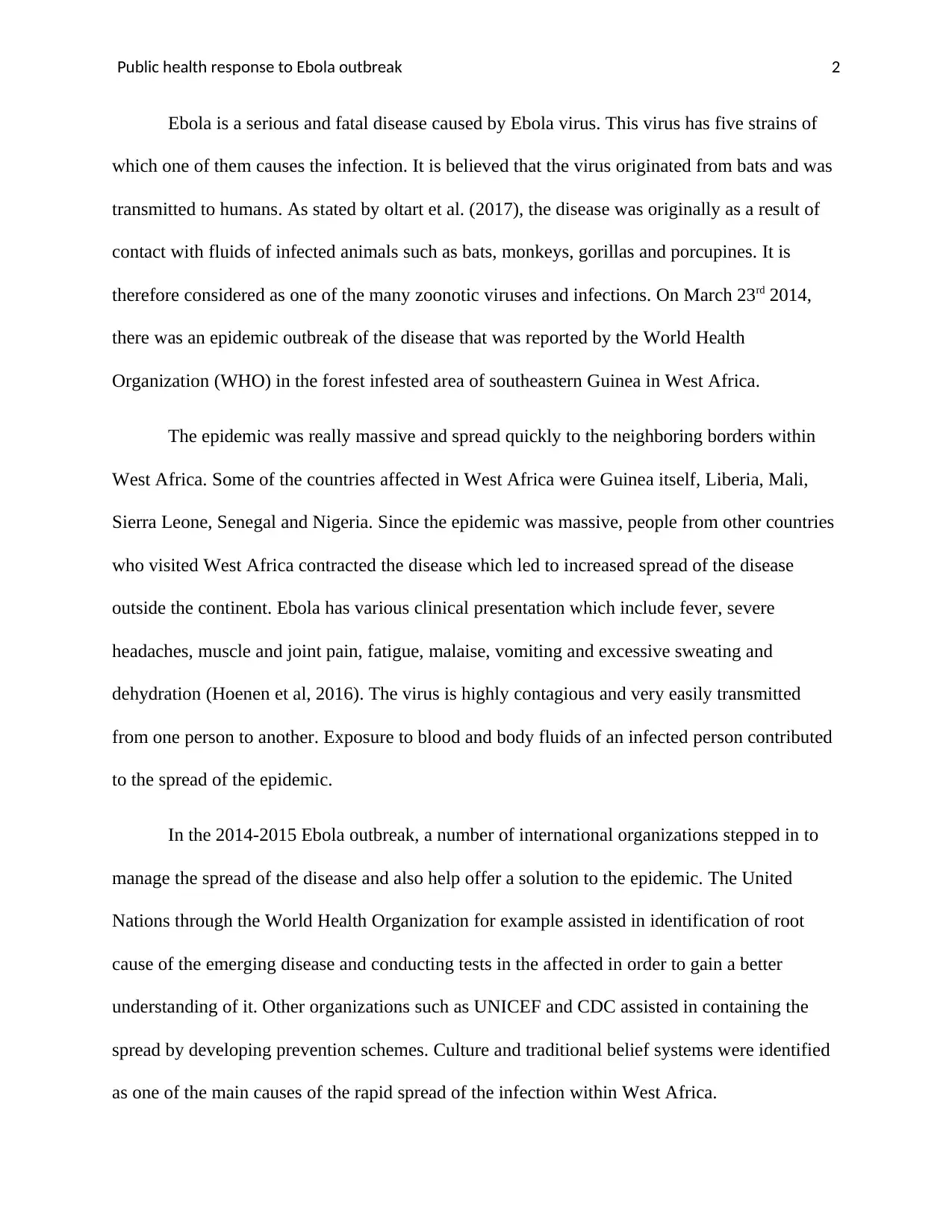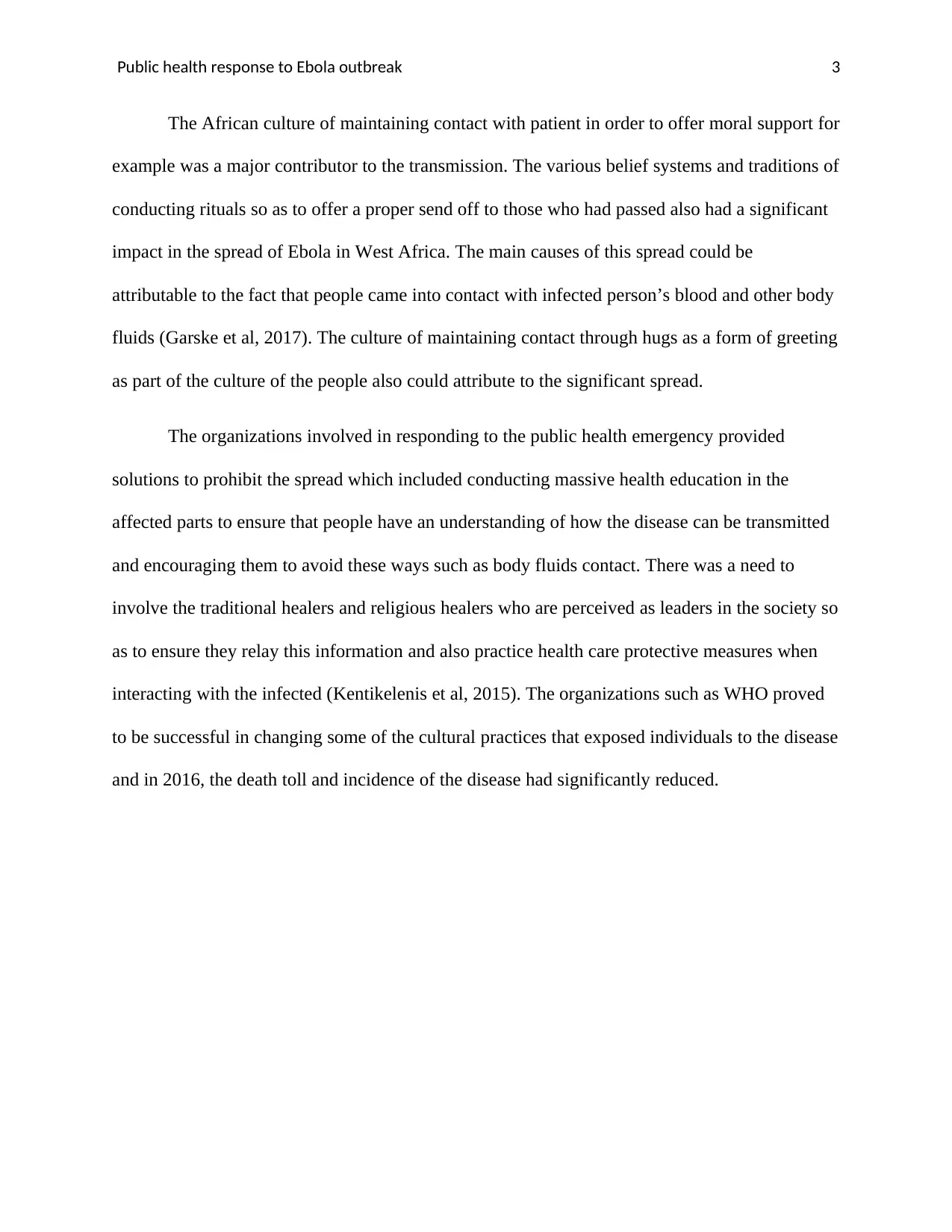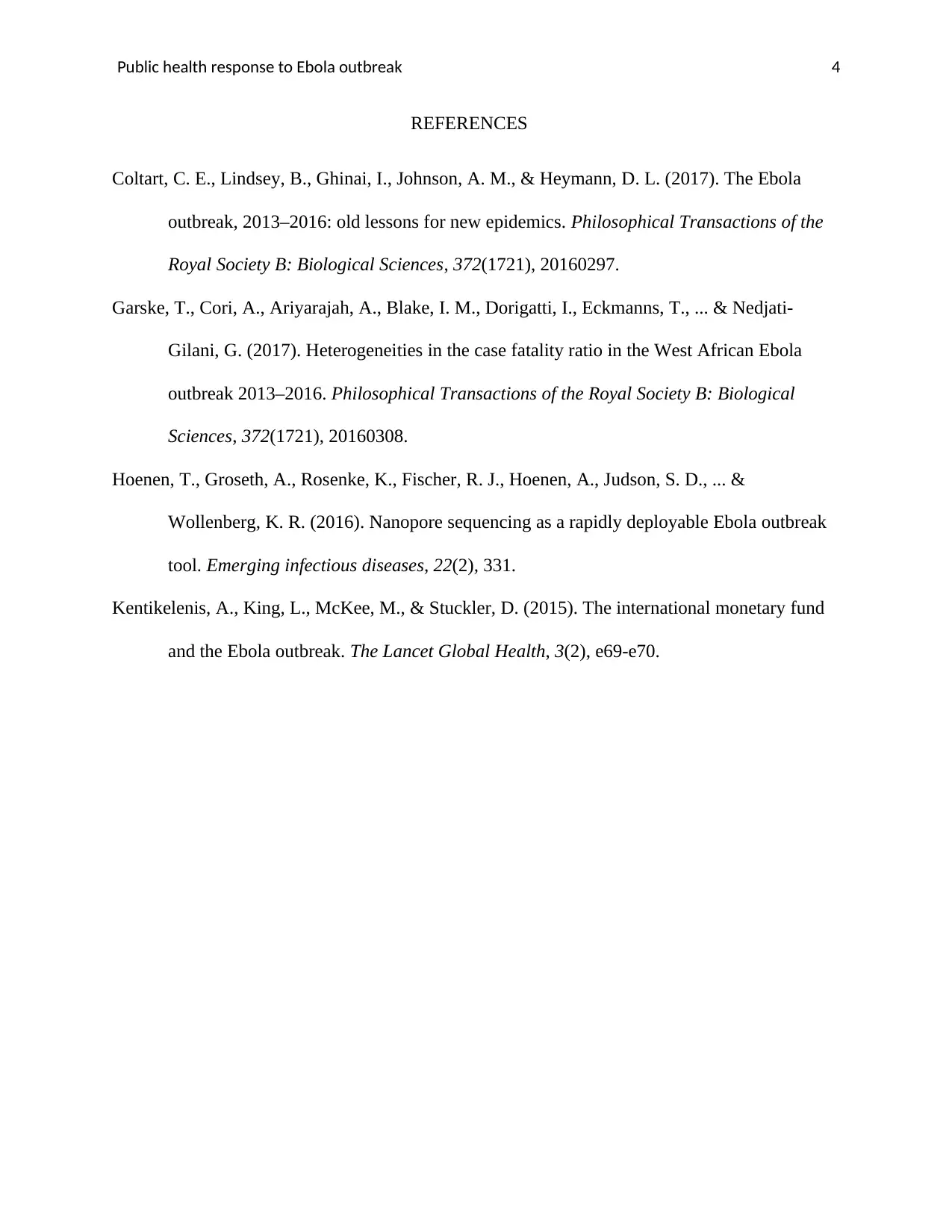Public Health Response to the 2014-2015 Ebola Outbreak in West Africa
VerifiedAdded on 2023/04/23
|4
|893
|487
Essay
AI Summary
This essay provides a comprehensive analysis of the public health response to the 2014-2015 Ebola outbreak in West Africa. It begins with a brief description of the disease and its origins, highlighting the role of zoonotic transmission. The essay then outlines the clinical presentation of Ebola and its highly contagious nature, emphasizing the significance of exposure to infected bodily fluids. It identifies key international organizations, such as the WHO, UNICEF, and CDC, that were responsible for managing the outbreak and implementing prevention strategies. A significant portion of the essay is devoted to exploring how cultural and traditional belief systems influenced the spread of the disease, particularly practices related to contact with patients and funeral rituals. The response of the organizations to address the spread of Ebola is highlighted, including massive health education programs and the involvement of traditional and religious healers. The essay concludes by noting the successes in changing cultural practices and reducing the death toll, as reported in 2016.
1 out of 4










![[object Object]](/_next/static/media/star-bottom.7253800d.svg)